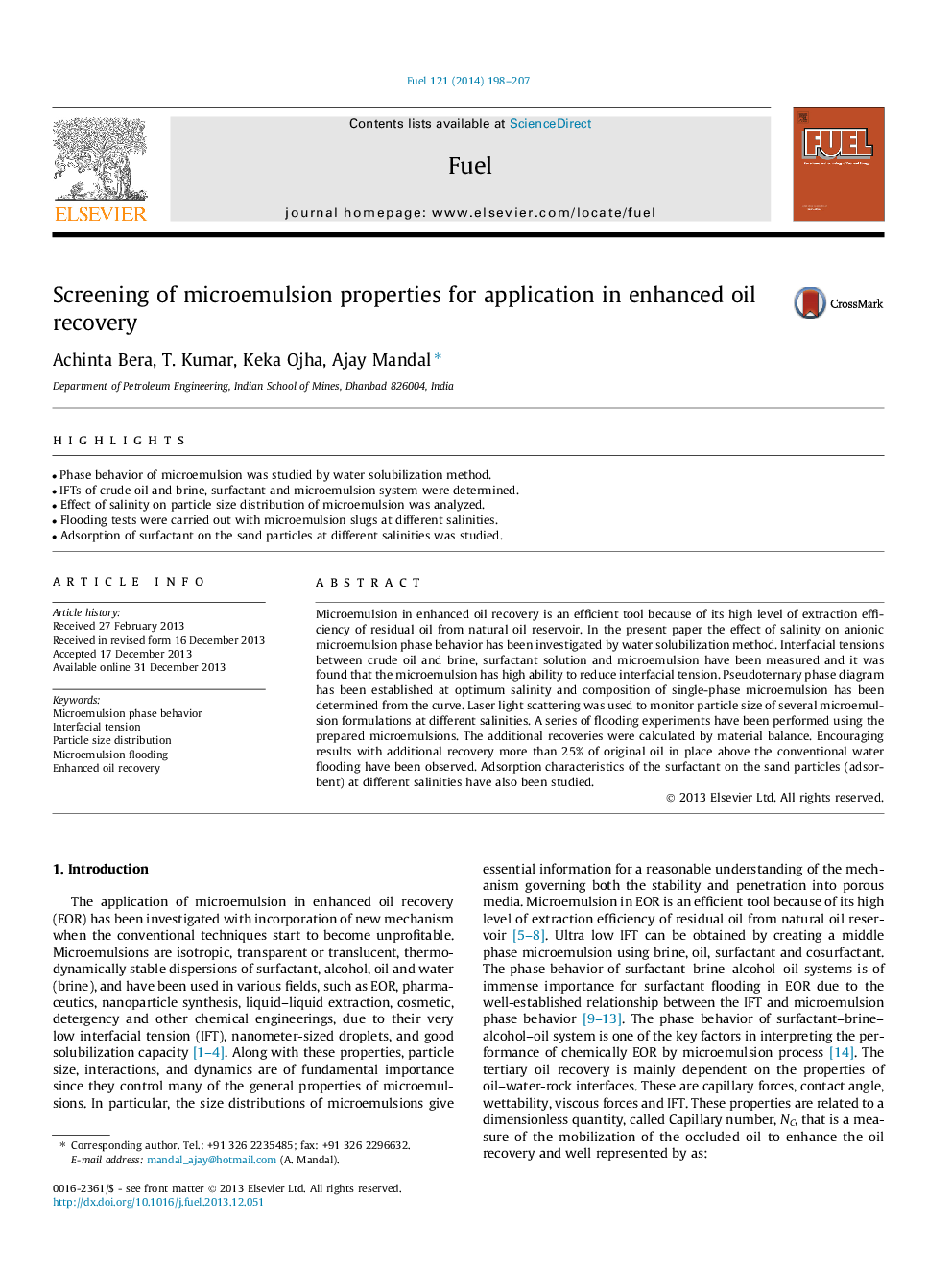| Article ID | Journal | Published Year | Pages | File Type |
|---|---|---|---|---|
| 206251 | Fuel | 2014 | 10 Pages |
•Phase behavior of microemulsion was studied by water solubilization method.•IFTs of crude oil and brine, surfactant and microemulsion system were determined.•Effect of salinity on particle size distribution of microemulsion was analyzed.•Flooding tests were carried out with microemulsion slugs at different salinities.•Adsorption of surfactant on the sand particles at different salinities was studied.
Microemulsion in enhanced oil recovery is an efficient tool because of its high level of extraction efficiency of residual oil from natural oil reservoir. In the present paper the effect of salinity on anionic microemulsion phase behavior has been investigated by water solubilization method. Interfacial tensions between crude oil and brine, surfactant solution and microemulsion have been measured and it was found that the microemulsion has high ability to reduce interfacial tension. Pseudoternary phase diagram has been established at optimum salinity and composition of single-phase microemulsion has been determined from the curve. Laser light scattering was used to monitor particle size of several microemulsion formulations at different salinities. A series of flooding experiments have been performed using the prepared microemulsions. The additional recoveries were calculated by material balance. Encouraging results with additional recovery more than 25% of original oil in place above the conventional water flooding have been observed. Adsorption characteristics of the surfactant on the sand particles (adsorbent) at different salinities have also been studied.
